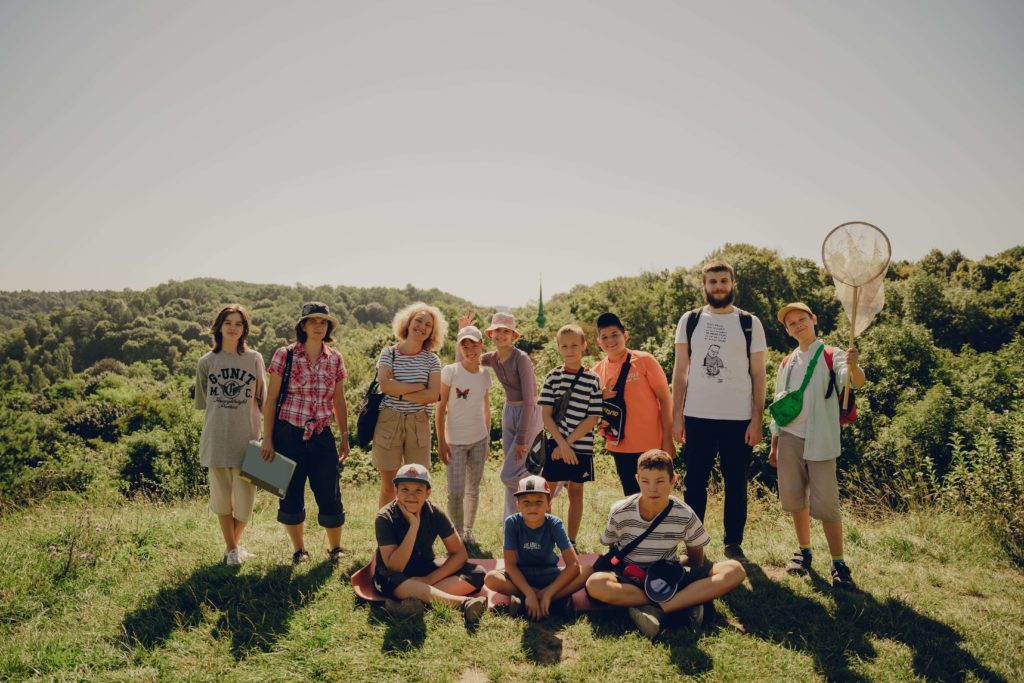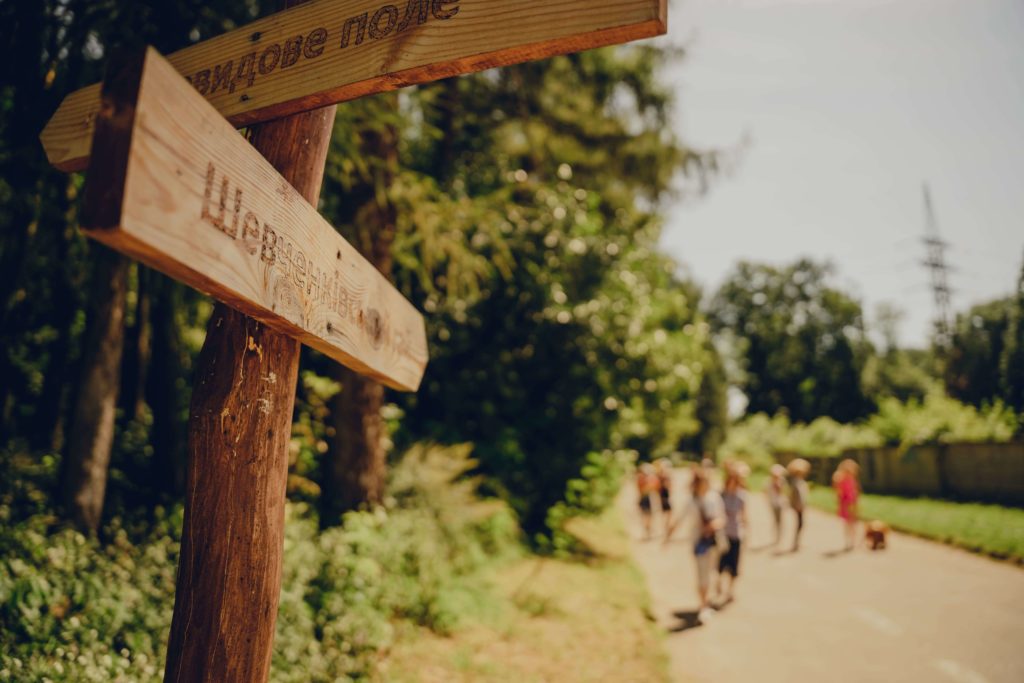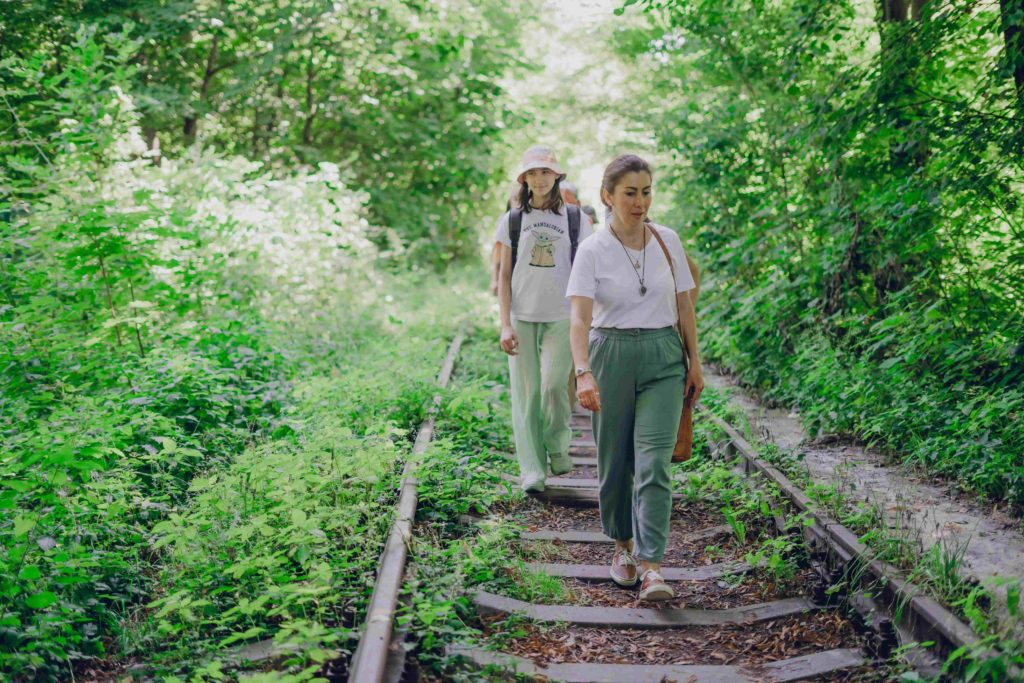The city is not just about noisy streets, anthills of apartment buildings and modern business centers. To take a rest from the bustle, to enjoy nature, to get a breath of fresh air, we go to parks. Remember what it was like when you were a kid? What attracted you the most among the hectares of urban greenery: a variety of plants for your home herbarium, the opportunity to watch butterflies, or maybe an abandoned piece of railroad with spooky legends around it?
For the third year in a row, the City Museum has been traveling around Lviv’s neighborhoods with children. We look for and find unexpected locations, create new routes, develop children’s subjectivity, and expand the boundaries of perception of our city. Children aged 9-14, who become map and quest authors, first participate in a training program and then create their own route through the selected locations. The third stage of the project to create children’s maps of Lviv’s districts is being implemented in partnership with the ZMIN Foundation and with their financial support.


What are we researching?
The location studied at this stage of the project is Lviv’s largest regional landscape park, Znesinnia, in the Lychakiv district of the city. Its area is almost 800 hectares. Not surprisingly, this time the team of quest creators set their personal best in long-distance walking. The developers also had to involve perhaps the biggest number of experts in the history of the project.
Moreover, the park impresses with its diversity of flora and fauna and its fascinating history. The city’s green areas are very changeable and transformed every season. The park preserves traces of millions of years of evolution and changes in the cultural landscape of Lviv.
So, we have 33 kilometers of traveled path, 12 experts in biology, ornithology, botany, history, geology, architecture, and geography.
Everything was done so that the quest participants could see the most interesting things, covering as little ground as possible in a short period of time.
What is our goal?
A quest and a children’s map are tools that help to encourage kids to explore new territories on their own, to make their own trails and to navigate among green spaces in a playful way.
The map and the Znesinnia quest aim to draw children’s attention to the fact that green areas are an integral part of every city. Parks are not only places of active recreation, but also a great school for learning about local flora and fauna and the urbanization of the natural landscape. It is also an opportunity to gain a better understanding of the environment and foster an ecological culture.


What will Znesinnia map and quest look like?
If those who complete the Znesinnia quest or walk around the park with our map are paying attention enough, they will see the outlines of the no-longer-existent structures that once stood in the park, such as a roller coaster or an ancient hillfort with idols.
The developers learned about this from the project’s training program. Oksana Omelchuk held her classes in the open air, taught about botany and instructed the team of quest creators to make a herbarium. Park employee Anna Hirna raised the topic of environmental pollution during the tour. She even conducted an experiment and demonstrated the release of CO2 into the atmosphere using the example of the interaction of limestone and acid.
Map orientation is a useful skill that will help you find the right way both in the city and in forested areas, as Lviv National University lecturer Yaroslav Yavorskyi told.
The participants learned what ornithology studies and what species of birds live in the park during a tour by Andrii Bokotey, walking along the steep cliffs of the park.
Thanks to the hospitality of Oleksandra Dyda, the children not only saw the external characteristics of modernism, but also saw the interior of one of the villas in the Professors’ Colony.
Usually we attract residents of the neighborhood to the team because they know it well and can reveal places of interest. But Znesinnia Park turned out to be a completely unknown place for the children. Seven boys and two girls worked in a group from August to December to select thirty non-obvious, most interesting objects in the park.



What have we learnt?
The hours of training and kilometres covered resulted in new knowledge and skills for all project participants, and we also learned from our own experience that:
A 5 km WALK is not an exhausting journey, but an attempt to feel like a conqueror of peaks,
BOTANY is not a science for “geeks”, but an opportunity to learn how to make a bicycle tyre out of a dandelion,
HISTORY of Lviv unfolds not only along the defensive ramparts, but also originates from the city’s quarries,
THE LANDSCAPE we observe is not stable, but a space that is constantly changing under the influence of natural phenomena and human impact.
The project is implemented with the informational, resource and financial support of the ZMIN Foundation and with the assistance of the Bosko Centre, Comics UA, and the Znesinnia Regional Landscape Park.
The project experts are Oksana Omelchuk, Anna Hirna, Bohdan Yavorskyi, Oleksandra Dyda, Andriy Bokotey, Natalia Dziubenko, Maryna Rahulina, Oleh Orlov, Taras Hrynchyshyn, and Maria Lukianova.
Photos: Halyna Kuchmanich, Oleksandra Provozin.